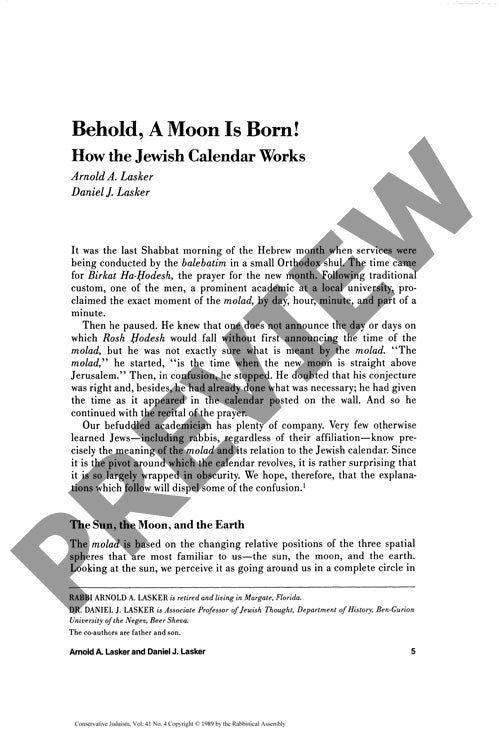Behold a Moon Is Born How the Jewish Cal
Couldn't load pickup availability
The evolution from observing the new moon to calculating it mathematically marks a pivotal transformation in Jewish timekeeping. While many assume the *molad* represents a visible astronomical event, it actually functions as a sophisticated mathematical approximation of lunar conjunction—a discovery that reshapes our understanding of Jewish calendrical practice. Through analysis of historical sources and astronomical principles, this research traces the transition from an ancient observational calendar requiring witness testimony of the *phasis* to the calculated system credited to Hillel II in 358-9 C.E. Investigation of the four *dehiyyot* (postponement rules) governing Rosh Hashanah reveals significant statistical variations in holiday distribution across weekdays. The findings establish that only the *molad* of Tishri directly affects calendar dates, with monthly *molad* announcements primarily serving *Qiddush Levanah* calculations. The interplay of three key variables—Rosh Hashanah's day, the lengths of Heshvan and Kislev, and the designation of plain versus leap years—generates fourteen distinct year types (*qevi'ot*). This systematic arrangement of postponement rules successfully balances practical observance requirements with lunar synchronization, demonstrating how mathematical precision replaced direct observation in determining the Jewish calendar.

More Information
-
Physical Description
-
Publication Information
Published 1989
ISBN
-
Publication Credits
Arnold and Daniel Lasker

